Dénes Nagy’s powerful debut and Berlin Film Festival winner is a portrait of war that continues a long tradition of dramas whose striking visual style grapples with the psychological impact of conflict. Ian Haydn Smith explores.

Natural Light opens on a crepuscular world. A misty river shrouds two men aboard a small boat, transporting the carcass of an animal they have just killed. The environment is deathly silent, with just the murmur of trees and the water their boat cuts through creating a ripple of sound. The stillness is soon interrupted by soldiers who order the boat ashore, take the animal and cut away all that is edible from it. It’s only in that moment, catching sight of the uniforms, that we’re given any indication of the era – let alone the war – in which Dénes Nagy’s drama is set.
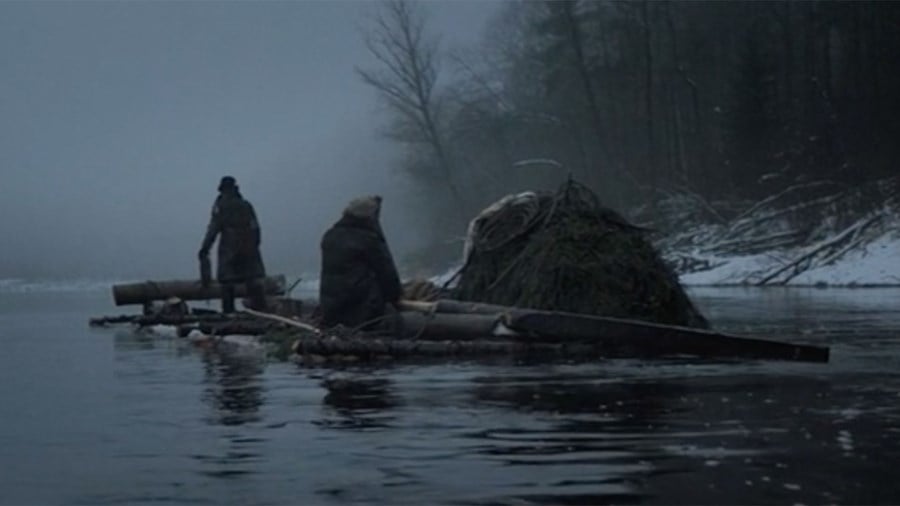
Natural Light (2021)
Cinematically, the Second World War is the most represented of any human conflict. (For instance, films covering the Great War number less than 200, but the 1939-45 conflict has appeared in more than 2,000 productions. Neither Vietnam nor the conflicts post-9/11 come close in terms of screen time.) Part of the appeal lies in the way that many films have presented World War Two as a Manichean conflict: Allies = Good, Nazis = Bad. (The same equation could be applied to Japan and Italy.) This was certainly true of the films made during the conflict and the decades that immediately followed it, particularly in mainstream English language cinema. However, in other national cinemas – and with the passage of time – representation of the conflict became increasingly ambiguous. The concept of the 'good war' was replaced by a portrait of lives impacted by its brutality, the descent into tribalism and the moral vacuum that such a world creates. It’s in this kind of world that Natural Light unfolds.

Natural Light (2021)
Corporal István Semetka (Ferenc Szabó) is a soldier in the Hungarian Army. Allied to the Nazis, Semetka’s unit is charged with hunting down partisans, along with anyone who aids them, in the dark, dense forests of Eastern Europe. Weary, they traipse from village to village, taking what they want and killing with impunity. When they’re attacked by a band of partisans, it is assumed that the village they just left informed on their location. With his superiors killed in the skirmish, Semetka finds himself in charge, a position his temperament is unsuited for. Unlike many of his comrades, Semetka has managed to retain a degree of his humanity, as evinced in his unwillingness to be cruel. But having spent eight months on duty, that small glimmer of decency dims with each passing day. In its place is a blankness – unresponsive to the atrocities unfolding around him. But Semetka still has a line he will not cross.

The way the Nagy introduces us to this world, with no immediate indication of what era we’re in echoes a number of recent films set in Eastern Europe during the same conflict. Ukrainian director Sergey Loznitsa’s In the Fog (2012), which unfolds along the Eastern Frontier in 1942, details a world that appears to exist at one remove from the mid-20th century. Likewise, Czech director Václav Marhoul’s The Painted Bird (2020), based on the novel by acclaimed writer Jerzy Kosinski and telling the story of the indignities suffered and atrocities witnessed by a young Jewish boy (Petr Kotlár) as he attempts to make his way home across a war-torn countryside, is even more emphatic in suggesting a world that has barely changed in centuries. The machinery of war might have progressed, but the mindset of some communities has not altered through the generations. Like Nagy’s film, Marhoul makes the most of the Czech landscape in creating this world. The woods young Joska journeys through allow him to disappear from certain potential threats, but within them are other untold dangers.
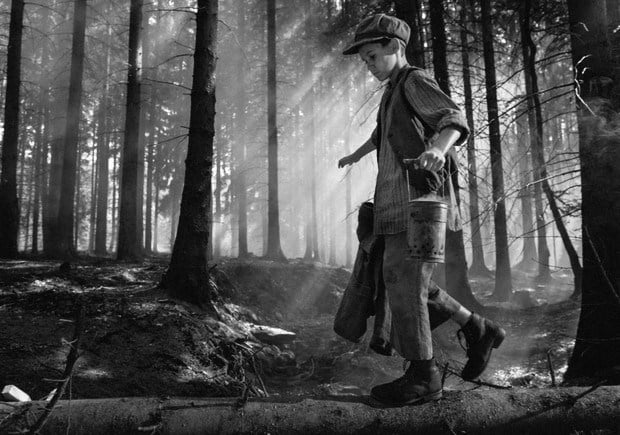
The Painted Bird (2020)
The opening of Natural Light also shares similarities with Alejandro G. Iñárritu’s The Revenant (2015). Set in the 1820s and unfolding across the vast mountain ranges of the present-day Dakotas, The Revenant tells the story of trappers set upon by an Arikara war party and are forced to escape to the safety of numbers via a treacherous mountain path. The attack takes place as Hugh Glass (Leonardo DiCaprio) and his group are gathering animal pelts for shipment downriver. Shot in the penumbra of a disappearing light, with a mist coating a river, Iñárritu achieves the same effect as Nagy; the opening scene sets a tone that falls between dream and reality, the latter evident in the cruelty of man and indifference of nature.
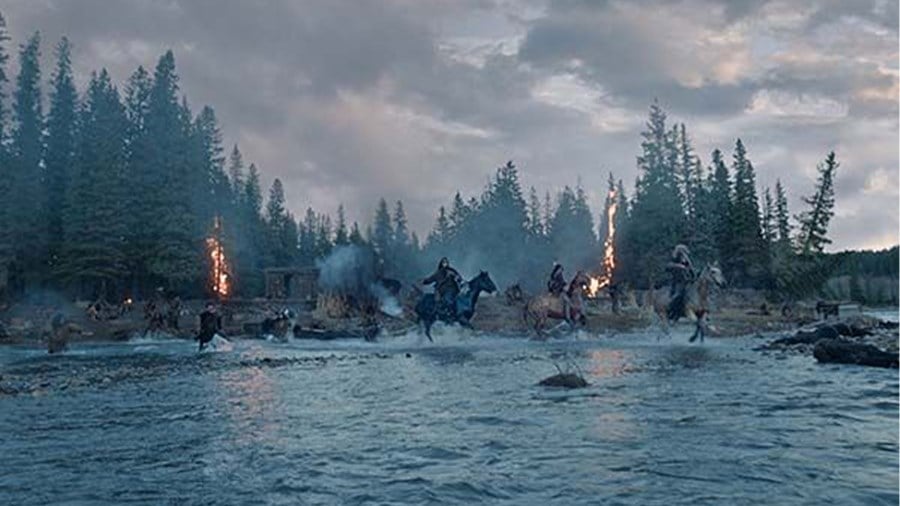
The Revenant (2015)

Natural Light (2021)
Nagy’s emphasis on Semetka’s sense of remove from the world around him – his participation in military exercises and engagement with villagers barely registering on his inexpressive face – underscores the film’s portrayal of the dehumanising impact of conflict. His camera regularly rests on Semetka’s face, but more often than not it trails behind, or just to the rear of his shoulder. It’s similar to the style employed by László Nemes in Son of Saul (2015). It not only gives us the protagonist’s perspective, but immerses us completely in their world.
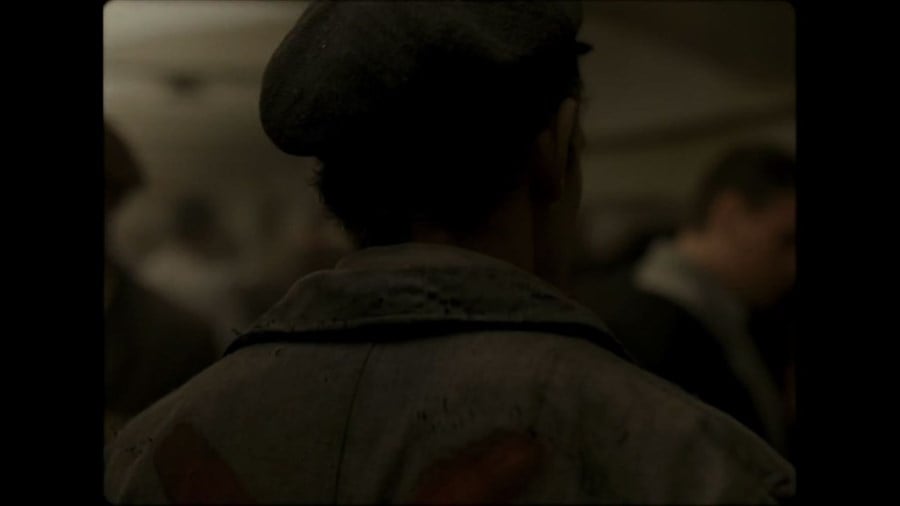
Son of Saul (2016)
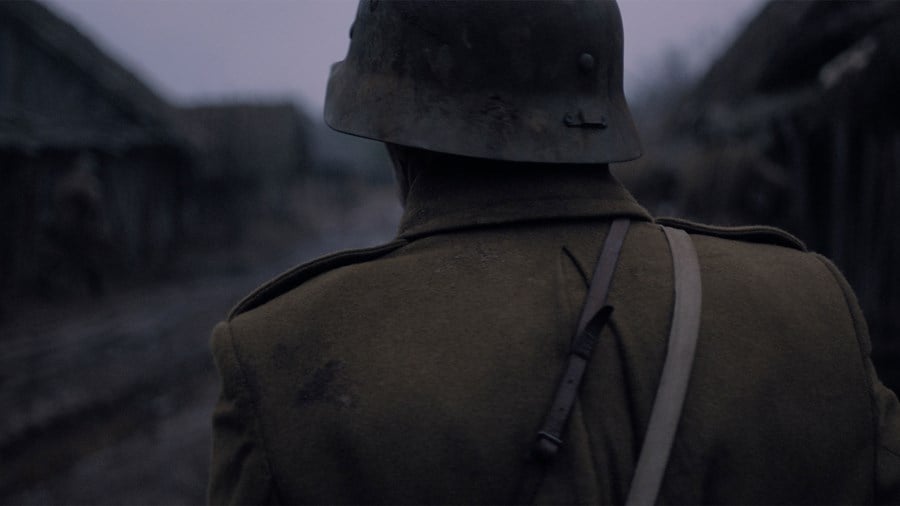
Natural Light (2021)
There are other films and filmmakers that Nagy’s thematic concerns and visual style echo. In his portrait of conflict, eschewing the good/bad dichotomy in favour of something more problematic, he mirrors the work of Hungarian filmmaker Miklós Jancsó. In particular his trilogy of 1960s black and white war films, My Way Home (1965), The Round-Up (1966) and The Red and the White (1967). Only the first film is set during the Second World War. (The Round-Up takes place during the 1848 Hungarian uprising against Austrian rule, while The Red and the White details the skirmishes between Communist and Tsarist forces along the Volga River in the aftermath of the 1917 Russian Revolution.) But all three emphasise the de-humanising nature of war, approaching it from a glacial rather than outwardly emotional perspective.

The Red and the White (1967)
Some critics have drawn parallels between Natural Light and the work of Lithuanian filmmaker Sharunas Bartas and fellow Hungarian Béla Tarr. There are certainly parallels with Bartas’s last narrative feature In the Dusk (2019), which is set in 1948 and details his country’s attempts to resist Soviet control. But the sense of dislocation felt by the protagonists of Bartas’ feature debut Three Days (1991), though set in the present, finds common ground with Semetka’s psychological state. Likewise, Tarr’s visually intoxicating cinema can also be seen as a reference point for Natural Light. Tarr’s defining 439-minute epic Sátántangó (1994), a rural drama that appears to exist within its own time zone – neither past nor present, but a strange amalgam of the two – shares a similar approach to engaging with drama, avoiding the pitfalls of sentimentality in favour of a more existential approach to its characters’ lives.
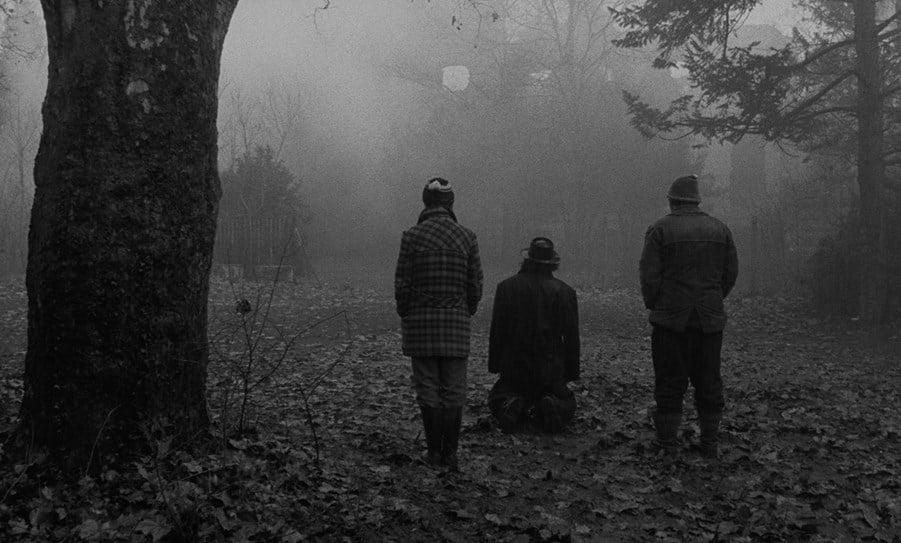
Sátántangó (1994)
The work of two other filmmakers also loom large over Natural Light: Andrei Tarkovsky and Elem Klimov. Nagy has spoken of the influence of Tarkovsky’s work and the world he creates echoes that of the Russian filmmaker, particularly in the way it employs imagery both on a visceral and metaphorical level. Tarkovsky’s seamless integration of realism and the poetic carved out new terrain in cinema, particularly in films like Mirror (1975) and Stalker (1979). But even in his first feature, the Second World War drama Ivan’s Childhood (1962), Tarkovsky sought to find a new way to represent a conflict that was riddled with cliché, sentimentality and vacuous displays of military might.
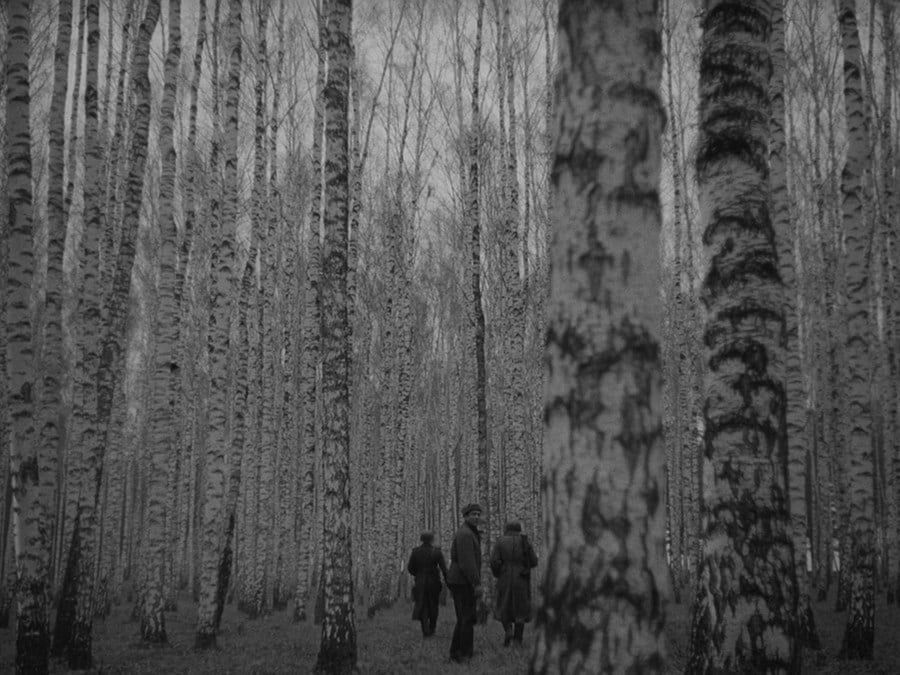
Ivan's Childhood (1962)
The forest in Ivan’s Childhood is a place of wonder that carries a darker undertone. Like the waterlogged trees that the film’s protagonist wades between for cover later in the film, the earlier forest scenes carry the air of an ever-present threat. Natural Light affects a similar tone. There is no safe space or place in the forest. That air of oppressiveness is impressively conveyed through Tamás Dobos’ cinematography.

Elem Klimov’s Come and See (1985) is widely regarded as one of the finest films to dramatise the Second World War. Adapted by Klimov and Ales Adamovich from the latter’s co-authored 1978 book ‘I Am a Fiery Village’, it focuses on the Nazi occupation of Belarus and a young boy’s (Aleksei Kravchenko) desire to join the fight. Soon after finding a gun, Flyora joins a partisan detachment in a forest – not dissimilar to the soldiers being hunted down by Semetka’s men. And his experiences soon become etched into his face. Both Come and See and Natural Light reach their apotheosis with an unspeakable atrocity. The horror of what unfolds is made clear, but in both cases is witnessed at one remove, with Klimov and Nagy’s camera trained on their protagonist’s face. Each is helpless to do anything – they are captive to forces outside their control.
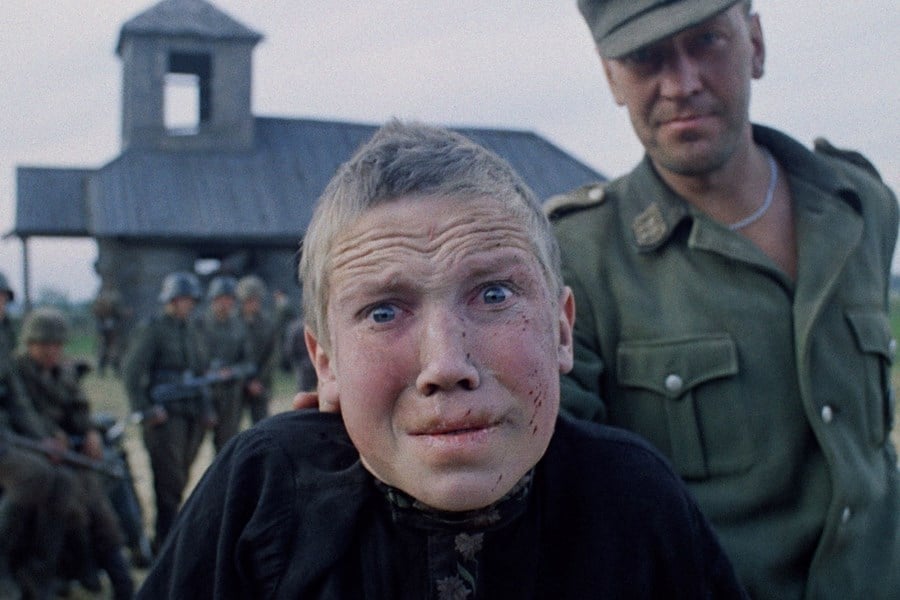
Come and See (1985)
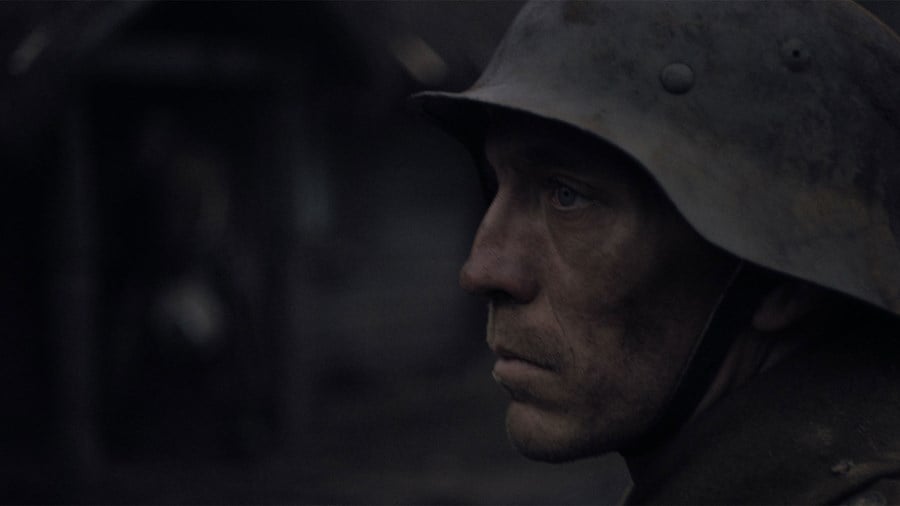
Natural Light (2021)
The emphasis the two protagonists’ faces tell us everything we need to know about the horror of what is unfolding – and in each sequence, the sound of a raging furnace is more disturbing than the sight of it. (The question of how far a filmmaker should go in representing such horrors dominated the debate around The Painted Bird.) But these shots also underpin the filmmakers’ intentions. To broaden the scope of their drama would have robbed the films of their power. It’s in Klimov’s intense focus on Flyora’s face that Come and See proves so devastating. Likewise, Semetka’s ordinariness, a decency ground down by experience and fatigue is our entry point into a squalid world. Witnessing Natural Light’s devastated world from his emotionally withdrawn perspective makes the experience all the more haunting.
Watch Natural Light Now In Cinema or On Curzon Home Cinema

